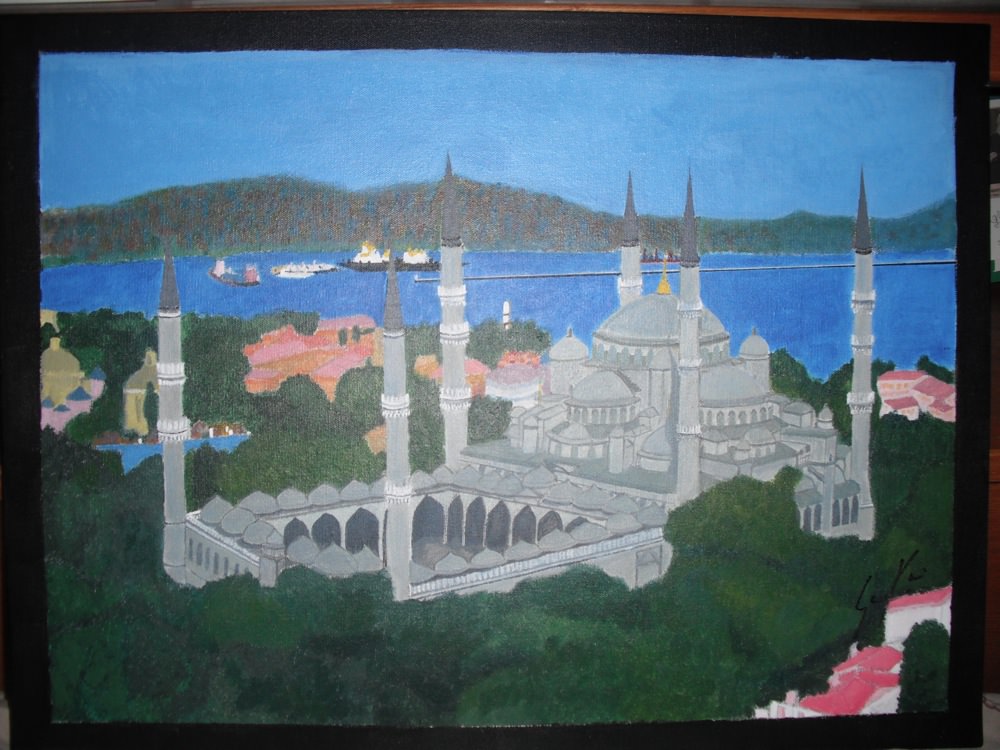Islamic Art
Islamic Art Feature: Pick of the Week 10/3/09
Keep supporting MuslimMatters for the sake of Allah
Alhamdulillah, we're at over 850 supporters. Help us get to 900 supporters this month. All it takes is a small gift from a reader like you to keep us going, for just $2 / month.
The Prophet (SAW) has taught us the best of deeds are those that done consistently, even if they are small. Click here to support MuslimMatters with a monthly donation of $2 per month. Set it and collect blessings from Allah (swt) for the khayr you're supporting without thinking about it.
-
#Society1 month ago
What Would Muhammad Do? – Silencing The Prophet: Liberal Islam’s Cowardice In Gaza
-
#Life2 weeks ago
Op-Ed – When Islamophobes Try To Intimidate Us, They Underestimate Our Resolve: A Call to Stand With America’s Muslim Students
-
#Current Affairs1 month ago
[Podcast] Welcome to the Islamic Republic of New Yorkistan!
-
#Life1 month ago
When The Powerful Eat Full And The Poor Go Hungry



























tazeen Hasan
October 8, 2009 at 8:46 PM
Excellent. Ia m also a student of Muslim Histroy and middle ages art. So It’s more than pleasing to see Muslims interested in thier own heritage (very rare indeed)
Imam Khan Makhtum
April 3, 2010 at 6:58 AM
In the history of ancient India, the rule of Harsha vardhan of Kanauj in around 606-648 was a remarkable achivement since he controlled almost North India including Bengal and part of Assam, contemporary of kamrup (now) Assam king Bhaskaravarman, who were visited by Chinese Buddhist pilgrim Huen Tsang in around 638 AD mainly to reach Buddhist institution at Nalanda (now) in India. In some authoratative hidtory like D. Debahuti, 1970, “Harsha-A Political Study”, Devahuti writes that after Harsha died, his kingdom was seized by one noble of Harsha named An-Lu-Shun and even chastised a chinese emmissary group who was was supposed to visit Harsha’s palace, but An-Lushan captured or humiliated some 30 of this Chinese Buddhist team. One person however escaped and fled to Tibet from where he brought many Tibetan forces which was even aided by Kamrupa king Bhaskara since the action of An-Lushan was gratuitous and unnecessary and Harsha himself did not want to face a Tibetan-Chinese invasion with who he already had good relation though Bhaska and late Harsha were great and philanthropic Hindu monarchs of reputation. After that the post Harsha and Post Bhaskara history of Kanauj-Kamrup-gauda was unknown gone into oblivion. Romila Thapar said that Bhaskavarman’s successor Avanti varman was succeeded by a Salastambha dynasty that was also called Mleccha dynasty, which is actually a term used by Brahamans or high caste Hindus to Arabs who did not live in caste system of Hinduism according to Romila Thapar. Mleccha is derived from Malik-Shah who was generally a chief of a Arab trade guild on Indian soil during silk route trade period. But Romila Thapar querried why Salastambha empire was called Mleccha dynasty and could not get definite ansher for that implying a need for more research. D. Devahuti also noted that Harsha was respected by a Mlechha (Arab) king. Actually, RM. Nath, 1976, Background of Assamese culture also noted that Bhaskar’s successor was dethroned by Mleccha/Arabs who came from all sides. In this context, close scrutiny of historical inputs suggests that an Arab team led by ambassador Saad bin Waqqas to Changan in c. 651 AD was requested by Tibetan forces to subdue An-Lushan. On the other hand, Muhammad al-Hanifa was ruling in northern Burma with Queen Khaya pari in 685-710 AD (see Abul-Fazl Ezzati, 1994, The Spread of Islam, Tehran: govt. Publication, pp. 300-335). Hanafiya’s son named Salim (Samlong) in Indo-China-Mongoloid tongue (history) visited Assam of Avantivarman in around 680 AD. The Avantivarman dynasty was a handpick of this pwerful Shan Muslim king Salim, at least of the founder of that dynasty, beacause of this factors of influence and bureacratic elements in post-Bhaskara and post-Harsha Kanauj by Arabs, and Chinese Tartars who were early converts to Islam, the Salastambha dynasty was called Mleccha dynasty which must be the answer Romila Thapar, the authourity on Ancient Indian History was looking for.
It is also widely reported in sources that a Chinese rebelleion by An-Shan was put down with the help 4000 Arab troops in 752 AD who all proceeded to China later and settled there by marrying Han wives. They were well decorated and respected by Tang kings of China hor honesty and efficiency in trade. This bulk of Arab-Han mix later formed the Hui Hui commuity or main chinese speaking Muslims of China other than Uighur and Panthays of Yunan where Islam reached by 688 AD due to silk route connection and by Indian and Chinese demand of Arabian horses/styllion. Another source indicate, a Korean Muslim adventurer Hwui Lin (Hui Lee) also visited northern India via Tibet in c. 780 AD.
Imam Kham Makhtoum
Manipur University
India
Hayrunnisa Barua
February 19, 2010 at 3:28 AM
I have read much comments about the tomb of Saad bin Waqqas in Canton, China (of around 651/674 AD) in “myummah.co.za†also. I think that was the tomb of son of Saad bin Waqqas (raa) born from a Chinese wife or Han/Hui wife.
Now, I find more sources in old books and on nets and wbs about the history of Amir Hamza, another uncle of Prophet Muhammad (pbuh) and his sojourn in Indo-China region, Malay archipelago and even upto Philippines who travelled by sea routes in SilkTrade epoch.
You should now concentrate on the details and veracity of this Personality who later went to Arabia and got martyred in the Battle of Uhood in 625 AD. So, Amir Hamza was in Burma-NE India frontier region before 625 AD . Muahhad al-Hanafiyya was also noted to have come to Arakan in 685 AD, Manipur, Barak valley of Assam and Surma valley (see also: Asim Roy, 1983, Syncretistic Tradition of Early Bengal Muslims, pp. 94, 104; Abul Fazl Ezzati, 1994, The Spread of Islam, Tehran Govt. Publication, pp. 300. 334). There is also a legend that Amir Hamza ruled in North Arakan for some time with great justice with capital at present Hmawza (named after him) near Prome which was called Srikshetra in ancient period or Hindu-Buddhist period earlier. There are manuscripts as Hanifar Ldai, Vijay Ami Hamza, Jangi Nama, Jangiwari etc in Bengali and Nagari Brahmi scripts handed down from 7th century recording tradition.
You should concentrade on history of Amir Hamza, and Muhahad al-Hanafiyya (son of Caliph Ali d. 660 AD from second wife) not just on Saad bin Waqqas.
Hayrunnisa Barua